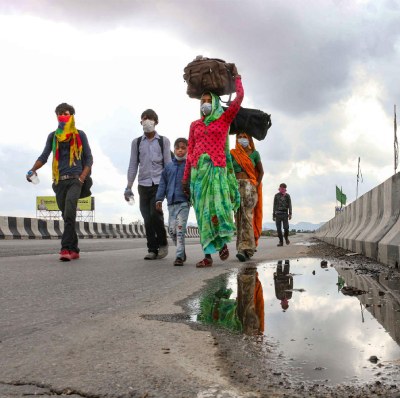
Fire Hazard or Covid-19: A Cultural Nudge to Prevent Safety Violations
- By Ritu Tripathi and Uday Vijayan
- June 02, 2020
Safety, Fire, Corona, Nudge
The past two months have been historic and the next several will be consequential. Dotting this immeasurable timeline are the moment-by-moment safety behaviours that citizens engage in. While the corona virus circumstances are unprecedented and its consequences unanticipated, there is an air of familiarity in some of the safety violations that we Indians have engaged in the lockdown period. Take for instance, a high-profile celebrity dodging the travel advisory, a few citizens breaking the lockdown, a few more assaulting the front-line health care workers, many more gathering in religious congregations and family functions, and others walking around without their quintessential face mask.
The two of us try to make sense of some of these violations of safety behaviours: RT studies cultural patterns in theoretical frameworks and empirical research in an academic setting, while UV drives the fire safety awareness initiative called BeyondCarlton created after losing his son in the Carlton Towers fire tragedy that took place on 23rd February 2010.
We see several commonalities in safety behaviours aimed at preventing fire and corona. One, the threat is invisible—it is hidden from sight but potentially imminent. Two, the risk is avoidable, that is, one can prevent fire and corona spread by consciously engaging in preventive behaviour. The third is that the risk is not confined to an individual—fire and virus both spread. Alarmingly!
We attempt to deconstruct cultural patterns in the safety behaviour of Indians. The objective is we do not resign ourselves to ‘hum to bus aise hain, aise hee rahenge’ attitude, but alert ourselves to how our cultural habits may be counter-productive to our safety. What kind of psychological appeals can we make to raise our safety?
Kurt Lewin, famously said, “there is nothing so practical as a good theory”. We build theoretical underpinning of safety avoidance by drawing on the widely-cited work of Geert Hofstede in cross-cultural research. Hofstede maps countries around the world on theoretical dimensions of relative differences. The three cultural dimensions serve well in explaining safety violations among Indians - collectivism, power distance, and uncertainty avoidance.
We discuss collectivism and its conceptual basis for Indians in this short note to identity the importance of community wide engagement in establishing the interdependence of outcomes as critical strategy to adopt new and unfamiliar actions that might otherwise threaten in-group identities. Similarly, in a separate short note we discuss the importance of the large power distance within India in comparison to global norms that makes us dependent on the diktats of trusted authority figures. We argue that safety appeals may work better when framed in a manner that accentuates soft power—the power of expertise, charisma, and trustworthiness, while invoking newer norms, obligations and orienting towards social behaviours.
Talking of uncertainty avoidance-- we know, and theory says it, Indians do not buckle under uncertainties. Far from it! In fact, uncertainties at times bring out the best in us. We do not have an emotional need for rules and regulations. And when rules do exist, the overpowering instinct is to “bypass the system” –such is our jugaad tendency. This obviously is counterproductive in safety behaviours.
Every safety violation is an act of victory, a thrill that comes from outsmarting the system. Similarly, while accepting prasadam with the right hand is second nature to us, so is the act of littering in public places. Both scenarios involve a tacit code of conduct—but we uphold one and defy the other—with ease and facility. Such is the forbearance with inconsistencies. How can we use our ability to withstand uncertainties and inconsistencies and come up with creative solutions to counter the jugaad used to flout safety violations?
Jugaad can be best fought with jugaad--hence anticipating where citizens are likely to cut corners in safety compliance and coming up with clever nudges to outsmart them is the way out. Ground-level enforcement workers are uniquely gifted with this talent; they seem to have a 6th sense in identifying potential violations and creatively offer solutions to thwart those who try to beat the system. The ground-level staff, be it in the police or in fire safety, therefore must be routinely consulted. Often their voices remain unheard even as their awareness of ground realities makes them very effective in ensuring the adoption of safety practices. Over the past two months, we have witnessed a range of controls from the swinging lathis of law enforcers in implementing lockdowns to cajoling and appealing to public emotions by portraying fear as Yama the Lord of death to anointing the rule-breakers in satirical attempts of embarrassing the individuals in public. Culturally improvised safe tactics might hit where it hurts the most—more forcefully than the lathis.
Covid-19 has inspired looking at safety behaviours in a new light. Our hope is that the measures at this time would sensitize us to other such issues, such as fire safety, which have been ignored, risked, and flouted, at the cost of precious lives. The idea is to see how best we can prevent what is preventable, by evoking and invoking some of our common idiosyncrasies to our advantage. This we call the cultural nudge to safety.











































































Ritu Tripathi
Uday Vijayan